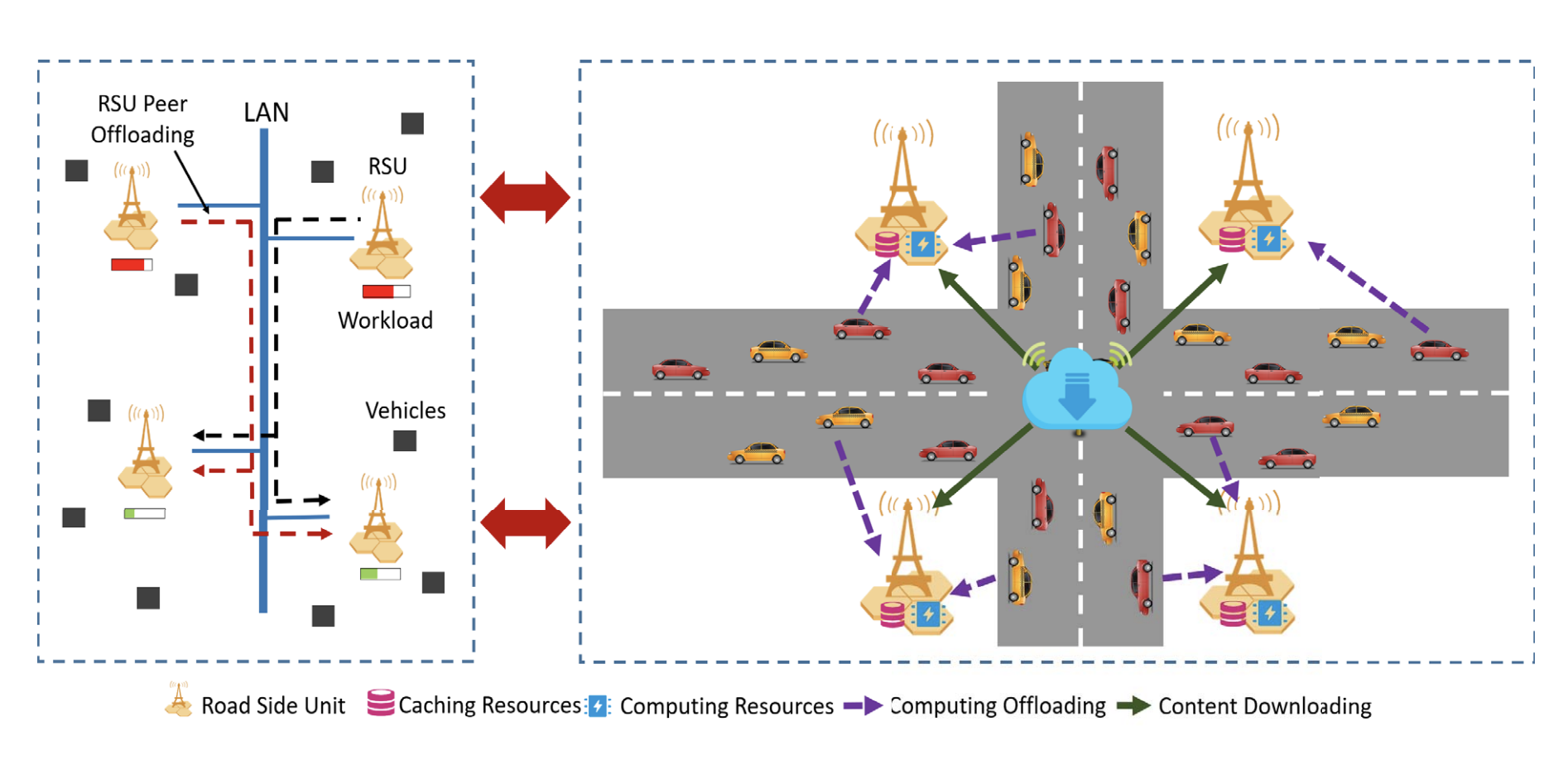Research
My research interests generally include computer networking and mobile computing. In particular, my primary research focuses on developing system-performance-oriented optimization techniques and Quality-of-Service control mechanisms for emerging access networks. I'm currently interested in designing distributed machine learning algorithms for performance improvement in 6G communication systems.
Issue. Ubiquitous Intelligence is a leading feature of 6G technology.
So What? It significantly impacts across multiple domains, including communications, industry, innovation, and even national security.
Problem. There is a large gap between current AI and wireless technologies due to the widespread distribution of mobile devices and data.
Solution? FL in MEC (How FL is deployed/applied in MEC) and MEC for FL (How MEC platform supports FL) to achieve UI.
Benefits. Shaping and enhancing our day-to-day experience and the country’s leading technological innovation worldwide.

This project aims to design task offloading schemes for the Internet of Vehicles (IoV) with the assistance of mobile edge computing. We began with an overview of in-vehicle networking, where the current in-vehicle networking technologies are summarized, compared, and analyzed. We advocated automotive Ethernet and presented a priority-based scheduler to reduce the cost of wire harnesses and guarantee delay-constrained performance. With the Ethernet being installed in vehicles, the barrier for vehicular communications and networking is significantly lowered. After briefly discussing the essential elements of the Internet of autonomous vehicles, such as architecture, features, and socio-technological issues, we propose a three-layer task offloading scheme for the intelligent IoV with the aim of minimizing the overall energy consumption while satisfying the delay constraint of end users. Due to the extraordinarily complex nature of the problem in question, we will devise a deep reinforcement machine learning technique-based method. Performance evaluations for our proposed method and their optimized variations will be conducted using real-world taxicab data in Shanghai and Hangzhou, China. Our approach is expected to be highly practical and efficient for task offloading and intelligent caching in large-scale vehicular networks.

The objective of this project is to mitigate the interference in device-to-device (D2D) communications that are underlaid in and coexist with cellular communications from a resource management perspective. Using game theory, we first designed a resource allocation mechanism for intercell D2D communications. Specifically, the problem in which two base stations located in two neighboring cells compete for bandwidth allocation quote to a D2D link appearing in the overlapping area of the two adjacent cells was investigated. This investigation was then extended to a new one where the game information was incomplete. It is worth noting that the extended version revealed a better performance than the previous version (with complete/perfect information) in terms of sum rate and that it is more realistic in the sense of matching real-world scenarios. In addition to the spectrum resources allocation, we also explored the issue of how to reduce the interference to cellular users and prolong the lifetime of the user devices in parallel by controlling the user devices’ power. A power control algorithm was subsequently devised in the presence of simultaneous wireless information and power transfer technique, which empowers the devices to transmit data and harvest energy simultaneously. Regarding how to use the harvested energy, a slew of online energy scheduling policies was developed based on the arrival properties of energy signals.

The goal of this project is to establish a spectrum of mechanisms to manage the Internet of Things (IoT) effectively and efficiently. Since the things are typically wireless sensors or RFID tags, which all have limited computing power and energy capacity, we started by proposing an energy-efficient hierarchical IoT architecture design. Since the proposed architecture does not require sensors equipped with sophisticated modules and runs complex routing mechanisms, it is expected to be flexible, scalable, and manageable. To deal with the potential chaos of medium access caused by massive machine-type communications, we presented an access control mechanism to ensure the quality of services and the sustainability of IoT systems in smart cities. We also developed a lightweight and cost-effective multicast routing algorithm for multimedia communications in IoT systems. A network-coding-based, relay-assisted, and bi-directional data transmission scheme was formulated as to the efficiency of data transmissions in IoT systems. Interestingly, this scheme reveals the following fact: the time-varying feature of the state information of the wireless channel between two IoT objects can be utilized in the network coding technique to achieve a specific system performance gain.

This project aims to improve the end-to-end performance of Cloud service delivery and the quality of experience for end users. To this end, we first presented two service models – the communication-as-a-service (CaaS) model and networking-as-a-service (NaaS) model, and then proposed a network-Cloud service provisioning architecture. In this architecture, CaaS and NaaS models allow communication and networking resources to be virtualized, exposed as services, and integrated with Cloud computing resources resulting in a framework of composite network-Cloud services. New service composition algorithms were designed, analyzed, and tested in congruence with the proposed architecture. The testing results show that these new algorithms are effective and resilient in selecting services for the network-Cloud service composition and in guaranteeing the end-to-end performance of the composite service provisioning. As a step toward real-world applications, we implemented a network-Cloud content-sharing system by leveraging the paradigm of software-defined networks (SDN) on the Internet. Other associated research topics, such as the controller placement in SDN and the competition among network/Cloud service providers, were thoroughly investigated during the implementation process.




